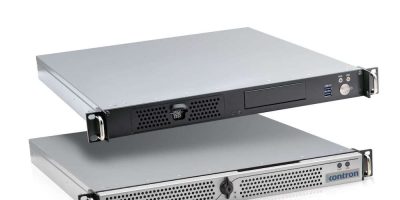The operators of critical infrastructure market segments such as 5G telecommunications, power utilities and transportation need to continuously upgrade their networks with technology capable of delivering higher processing speeds and highly accurate time sources that are not dependent on the Global Navigation Satellite System (GNSS) constellations like GPS, GALILEO and QZSS. To provide network operators a terrestrial alternative for distributing very accurate time, Microchip has announced the new TimeProvider 4500 grandmaster, a hardware timekeeping platform that provides high-speed network interfaces up to 25 Gbps and enables precise time accuracy of less than one nanosecond.
The TimeProvider 4500 grandmaster is capable of supporting very-high-capacity Precision Time Protocol (PTP) transactions. The innovative hardware platform enables higher IEEE-1588 scalability for thousands of clients. In network locations where range and capacity need to be balanced, namely in C-band 5G deployments, it is critical to be able to serve thousands of gNodeB from a single grandmaster. Depending on the specific sites, the grandmaster could serve very few or a large number of gNodeB base stations. This results in cost-effective and flexible deployments for operators regardless of scale.
The TimeProvider 4500 grandmaster offers the flexibility to connect to various generations of network elements, which helps to preserve operators’ infrastructure investments. The TimeProvider 4500 clock is the first 1588 grandmaster with 25 Gbps support. A customer can connect the TimeProvider 4500 clock to various network devices using a choice of 1 Gbps, 10 Gbps or 25 Gbps network links. High-speed bandwidth is essential as network element upgrades are migrating towards equipment that requires a minimum of 10 Gbps and, in some cases, up to 100 Gbps.
The extremely high time accuracy of the TimeProvider 4500 grandmaster is particularly important as operators are trying to deploy alternative solutions to GNSS.
A terrestrial option is often considered an attractive solution that can leverage existing optical network deployments to avoid the reliance on GNSS, thus providing a cost-effective way of transferring highly accurate time over long distances. The need for long-distance transfers translates into a requirement for ever- increasing accuracy needs at the source and regeneration of the time signal.
The TimeProvider 4500 grandmaster features new hardware assist enhancements, such as the latest generation of digital synthesiser and Microchip’s PolarFire SoC FPGA. These platform enhancements enable the system to move into the picosecond time accuracy realm.
“Microchip continues to develop new and innovative time and frequency solutions for critical infrastructure. We designed the TimeProvider 4500 clock to deliver tighter timing accuracy on existing optical network environments without the need for costly upgrades or dedicated dark fiber,” said Randy Brudzinski, vice president of Microchip’s frequency and time systems business unit. “This solution is also the first grandmaster with high-speed data processing up to 25 Gbps, enabling connectivity with the newest network elements in deployments.”
The advanced hardware platform of the TimeProvider 4500 clock supports all the features of the TimeProvider 4100 clock to ensure that operators deploying the new product can also benefit from their investments in the TimeProvider 4100 series. TP4500 adds specific capabilities above and beyond TP4100 due to its enhanced hardware platform.
The TimeProvider 4500 grandmaster is integrated with the TimePictra synchronisation management solution that enables operators to monitor and track real-time troubles and threats with visibility across their entire network. Other key functions of the TimePictra platform include comprehensive Fault, Configuration, Accounting (Inventory), Performance and Security (FCAPS) management functions; geographical topology and domain navigation; user preference dashboard customisation, intuitive web GUI for easy management and more.







